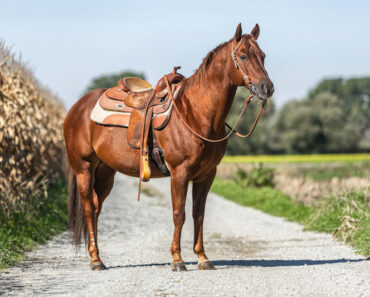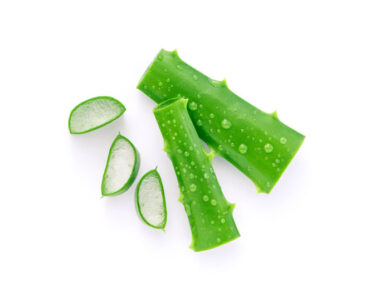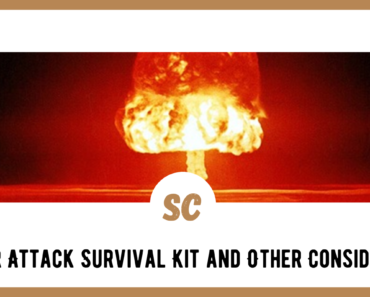I’ve always found primitive weapons to be fascinating. In part, because they are a part of our history but also as simple as they appear, they are much more effective than they are given credit for.
In my experience, most people don’t seem too interested in them. I think because the word primitive is attached to them and that somehow makes them ineffective or inferior by today’s standards.
Many of the primitive weapons on the list below were used for much of human history and some still are today, in one variation or another. And for all those years, these weapons, primitive weapons they may be, were used with great skill for defense, attack, and hunting for food.
Once primitive weapons were developed, the knowledge to make them was passed down from one generation to the next. Sadly, in modern times, this practice became less and less as more advanced tools have been created.
We often look at modern tools as being superior in every way possible but believe it or not, that isn’t always the case.
Okay, so you may not be interested in primitive weapons whatsoever, but you are on this site which is about prepping and survival situations, and in a survival situation, your only option for weapons or tools, may be ones of a primitive nature.
Lastly, these tools or weapons may be considered “primitive” weapons but in the right hands, they were, and still are, effective weapons.
The primitive weapons covered in this article can certainly be considered survival weapons and were some of the first weapons used in cultures around the world. Most of these primitive weapons were used in close-quarters combat, hunting large game and small game, and defending against dangerous animals.
Some are still used today much as they were long ago while others have evolved from using natural materials to newer materials and designs into the modern versions we see today.
13 Primitive Weapons
The primitive weapons in the following list are by no means an accounting of all primitive weapons. There are certainly other weapons that could be added but the list would then be much, longer.
I decided to talk about the most common and well-known so that if you ever needed a primitive weapon for a survival situation, you would already have a familiar baseline to draw from.
Rocks and a Stick
Primitive weapons don’t get much simpler than rocks and a stick. These probably came about as survival weapons when people realized they were more effective than hand-to-hand combat.
These tools probably started small, a single rock in the hand that was used as an impact tool or thrown at small game. The same can be said for a simple stick that was picked up off the ground and swung around.
These choice of weapons were the easiest for humans to use because they require almost no skill and they can be found almost everywhere.
From these humble beginnings, a simple rock and stick were used throughout the evolution of survival weapons.
Club
The club is a logical step up from a simple stick. While a stick might just be a loose branch found on the ground, a club has a little more thought into it. Its design entails a baseball bat-like appearance.
The handle end is somewhat small in diameter so it is more comfortable to hold, grasp, and use. From the handle, the club gradually becomes larger in diameter and therefore heavier. This extra weight helps to generate more force when the weapon is used. Much like what most people think of as a “caveman club.”
Another variation of the club is one in which the handle and the overall length of the shaft are smaller and it ends with a more robust, thicker end.
Throwing Stick
A throwing stick, sometimes called a rabbit stick, has a similar appearance to a boomerang. However, the throwing stick is more robust and not symmetrical. It’s more like a mini club, with one side of the stick being thicker than the other.
This is a short-range weapon as it relies on human strength to be propelled and the stick is not meant to be aerodynamic.
In fact, it’s design is meant to be a rather blunt object. While the throwing stick could be used against a dangerous animal, it’s more effective at knocking birds and animals from trees and against small game on the ground.
In a survival scenario where wood is available, a throwing stick is one of the easiest weapons for a person to come up with when hunting for food.
Spear
Nothing screams primitive weapon like a good old-fashioned spear. A spear is a length of material, the pole, with a sharpened end. The pole was generally made out of wood with one end turned into a narrow point.
This was done by either carving away the wood with a cutting tool or by rubbing the end against a rough surface such as a rock. A person can make a spear in this fashion very quickly. Technically speaking, spears are nothing more than a pointed stick, but don’t let that fool you.
Unlike other weapons, spears can actually be used in a couple of different ways.
The first is that it can be used as an impact tool, much like a club, by swinging it or using the nonsharpened end.
Switching over to the sharpened end, there are two main ways that the spear is commonly used. When it’s kept in the hand a spear helps to create distance between the user and a threat. The pointed end is used in a thrusting motion when fighting in close quarters.
A spear can also be thrown overhand at an incoming target or one running away. While a thrown spear is effective, the biggest downfall of doing so is that it leaves you without a weapon.
Spears are good hunting tools when held or thrown but do require a level of skill when throwing them. They would be one of the easiest weapons to create in a survival situation because the materials needed for one are usually abundant.
Spears can vary in length and different styles of tips used. A spear can have a single point or multiple points made from wood or metal. Much like some of the first knives, a sharp rock makes for an effective spear point.
Wood tips would sometimes be fire hardened which can bring a level of durability but also brittleness.
Another type of point includes barbed tips, which would be used when you wanted to cause more damage or not allow the tip to be easily removed from the target.
Atlatl
If you are interested in the idea of throwing a spear, I would suggest checking into the atlatl. The atlatl consists of a stick with a curved notch or point on one end and a projectile resembling a large arrow/spear is placed in the notch. A person then makes a motion very similar to throwing a spear to launch the arrow.
This device allows different sized projectiles to be thrown just like spears, making it a suitable weapon or hunting tool. It will take some practice getting used to an atlatl but once you find your groove they are very effective.
Sling
The sling is a well-known weapon in part due to the story of David and Goliath, in which David takes down Goliath with this simple weapon.
A sling is the next step up from simply throwing a rock. It is composed of two strands of cordage attached to a small or large pouch, the size of the pouch depends on the size of rock being used.
A rock is placed into the pouch and the sling is rapidly swung over the head or to the side of the body. When the shooter is ready to fire they let go of one of the stands and the rock is released from the pouch. The sling can increase the distance that a rock is “thrown,” but it definitely increases its velocity.
Some attribute the origins of the slingshot as an evolution of the sling although it may be more similar to the bow and arrow. Perhaps it’s a hybrid of the sling and bow?
Since the slingshot came to be around the 1900’s, it isn’t really what I would consider a primitive weapon, but I thought it would be worth mentioning.
Slingshots can shoot an array of ammunition that include rocks, marbles, clay shot, steel shot and with the right attachments, it can even shoot arrows. Slingshots are easy to carry and are a quick way of obtaining food from small game.
Bow and Arrows
The bow and arrow is probably the first thing that comes to mind when thinking of primitive weapons. Most likely because it has been around so long and used in one form or another all around the world.
The bow is a curved piece of wood with a string attached from one end to the other. When the string is pulled back, the limbs of the bow are compressed, much like a spring, and tension is created.
When the string is released, the limbs spring forward to their original position which pulls the string forward and launches the arrow that is attached to the string.
The bow has undergone many different designs included including the long bows, recurve bows, cross bows and compound bows.
Arrows or bolts, have also changed over time, especially the tips. Some are single tipped and sharp, others blunt, some pronged, and some with expanding blades. The bow is such an effective and liked weapon that even today it is still widely used by hunters for small game and large game such as deer.
Knife
In my mind, the knife is a shining example of a primitive weapon that has stood the test of time. One of the oldest known knives is thought to be over a million years old and while the materials used to create them have changed and many different styles exist, the knife is still widely used today.
The pimitive knife is one made from a sharp stone, possibly with the handle of the rock wrapped in a natural material.
More decorative and ergonomic handles could be made from wood, bone, or antler and the blade could be made from the same type of materials or any material that is suffeicnetly durable and can be sharpend.
Blowgun
My first experience with a blowgun type of weapon landed me in the principal’s office. That’s because I had covered the teacher’s chalkboard with a fine grouping of mushy spitballs.
Of course, a spitball shooter is not the same as a blowgun and darts. Lethatlity not withstanding, their design and use are quite simliar.
A blowgun consists of a long hollow tube and a mouthpiece that is larger in diameter than the tube. After darts are placed inside of the tube, the shooter breathes in a lungful of air and blows through the mouthpiece, launching the darts out of the opposite end of the tube.
Even though blowgun darts may not look all that threatening, don’t be so quick to dimiss the blowgun as it is a silent and deadly weapon.
Often, the tips of the darts would be dipped into a substance that would either act as a sedative or a poison. This allows the blowgun to be used against smaller animals as well as larger ones.
Tomahawk
The tomahawk is primarily attributed to the Native Americans of North America.
Early tomahawks had stone chopping heads that were lashed to short wood handles. Later, the stones were replaced by metal heads, making the tomahawk even more efficient and deadly.
One defining feature of the tomahawk is that the chopping head can be easily removed. Once removed, the head can be used more readily as a handtool for smashing or scraping.
Like a spear, a tomahawk can be used in the hand or thrown, although throwing it effectively takes quite a bit of practice.
Bola
The bola is an interesting looking weapon and was used more as a means of entrapment than it was for lethality, although stones flying through the air can certainly be lethal.
The bola is made up of two or more weights, usually stones, and each was attached to a strand of cordage. The individual stands where then all secured together at the other end.
The bola is used similar to the sling where the user holds the end of the cordage and swings the weights over their head or to the side of the body in a circular fashion. When they have built up enough momentum, the strands are released.
As the bola flys through the air, the weights spread out. The weights then spin around the target, ensnaring it in the cordage.
Interesting Facts About Primitve Weapons
What is the world’s longest javelin throw?
The javelin is a type of spear used in defense, and the record was set in 1996 by Jan Zelezny who threw a javelin 98.48 m (323.09 ft.)
What is the sharpest knife in the world?
The sharpest blades in the world are not made from steel or other modern materials that have been developed, but those made from obsidian, which is a type of volcanic glass. In fact, obsidian knives are sharper than surgical steel scapels.
Wrap Up
Whether you are interested in primitive weapons from a historical or reenactment standpoint, they are still effective tools with some still being used today. From a survival standpoint, they are definitely worth having knowledge about and practicing with because they are relatively easy to make.
Thanks for reading and stay prepared!





















![[VIDEO] Transforming an LMTV into the Ultimate Bugout Overlander – Part 5 [VIDEO] Transforming an LMTV into the Ultimate Bugout Overlander – Part 5](https://survivalcove.com/wp-content/uploads/2023/02/lmtv_article_edited-370x297.jpg)





















